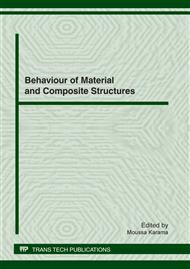p.115
p.126
p.139
p.151
p.161
p.173
p.187
p.199
p.210
Structural and Mechanical Characterization of Stainless Steel Joints Realized by CMT Process
Abstract:
CMT weld brazing process (Cold Metal Transfer) knows a higher applicability in various industries (aeronautic, automobile) due its advantages compared with other welding processes. The paper presents the experimental results obtained on sheets joints using austenitic stainless steel mark 304 of 1 mm thick in butt and overlap variants using CuSi3 filler alloy of 1.2 mm diameter. The macroscopic analysis shows that were not presented welding defects and the microscopic examination did not showed welding defects such as microcracks. After the mechanical tests it was observed that al the tested specimens the fracture occurred in the base metal except the sample 1 where the fracture occurred in the welding zones. The bending test showed that all the samples were bent to 180° without cracks which assure good mechanical resistance to deformation. ΔHV1 estimator values determined in the characteristic areas of the joints shows that at sample 2 there are structural hardening tendencies in the zones BM1-WELD and BM2-WELD with values of 36% respectively 28.5% attesting moderate structural hardening (ΔHV1<50%), the brittle-type fracture risk in these areas is considered low.
Info:
Periodical:
Pages:
161-172
Citation:
Online since:
January 2012
Authors:
Keywords:
Price:
Сopyright:
© 2012 Trans Tech Publications Ltd. All Rights Reserved
Share:
Citation:


